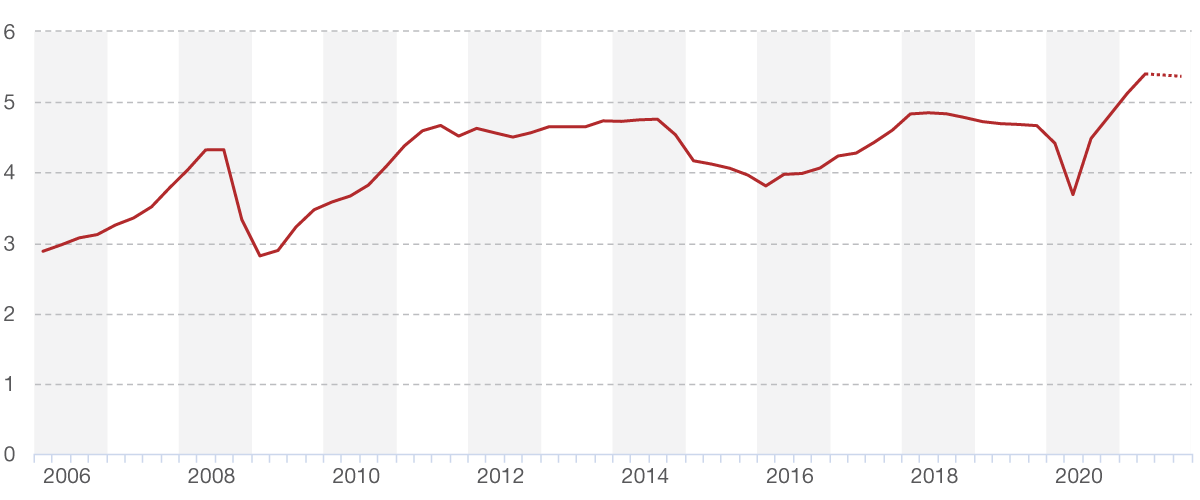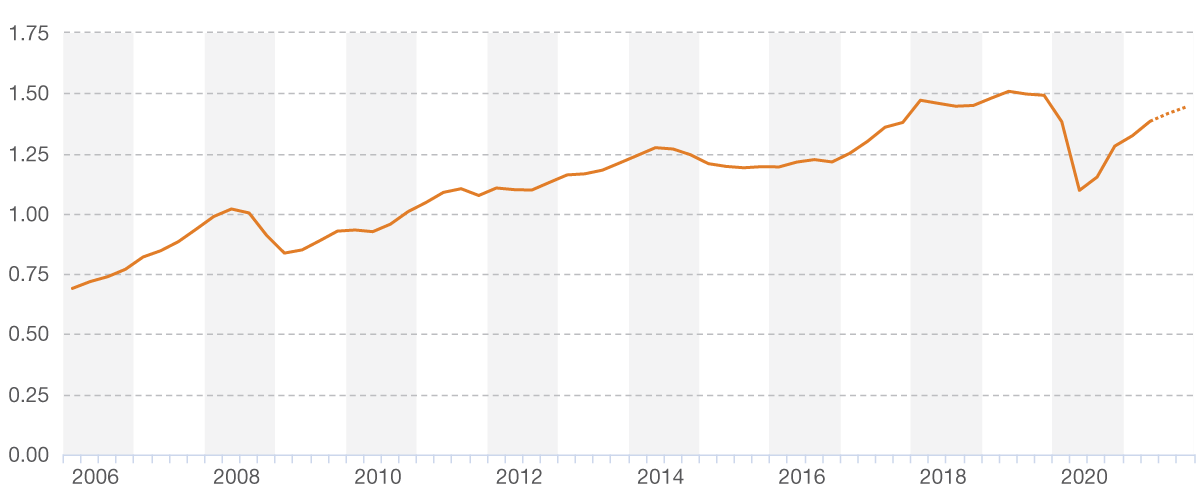UNCTAD nowcasts show that trade in services has not yet reached its pre-pandemic level, while merchandise trade is projected to have surpassed it by 15%.

Bukit Merah, Singapore. Unsplash/CHUTTERSNAP
UNCTAD’s Handbook of Statistics for 2021 published on 9 December nowcasts a strong increase of 22.4% in the value of global merchandise trade this year compared with 2020. The strong growth will push the value of world trade in goods about 15% higher than before the COVID-19 pandemic hit.
Trade in services, however, will still fall short of pre-pandemic levels despite the 13.6% growth nowcast for 2021 after a deep contraction recorded in 2020.
The annual report presents the statistical landscape for 2020 through a wide variety of statistics relevant to international trade, investment, maritime transport and development. It also depicts developments in 2021 through data-led projections, known as nowcasts, for now and the immediate future.
“Reliable and timely data are in high demand as COVID-19 puts unforeseen pressure on decision makers, who are scrambling to get a handle on the pandemic-affected economic landscape,” said UNCTAD’s acting head of statistics, Anu Peltola. “These statistics are needed for evidence-based policy responses to the pandemic.”
The nowcasts incorporate the latest data available at the time of the finalization of the report. They don’t reflect the potential impacts of the new omicron variant since data are not yet available for December 2021.
The estimates will be revised as official statistics and other indicators for 2021 become available, with UNCTAD’s next trade nowcast bulletin set for release in January 2022.
Figure 1. World merchandise exports, quarterly (trillions of United States dollars)

Figure 2. World services exports, quarterly (trillions of United States dollars)

Note: Seasonally adjusted series, the dotted line indicates UNCTAD nowcasts
Huge merchandise and services trade declines in 2020
According to the report, world merchandise trade recorded a decline of 7.4% in 2020 during the COVID-19 pandemic. Global exports amounted to $17.6 trillion, a $1.4 trillion fall from the previous year. This was the biggest annual decline since 2009, when trade fell by 22%.
The decline in global services trade value was much stronger, with a contraction of 20% in 2020 compared with 2019. This was the biggest decline in services trade since the beginning of its recording. In comparison, the value of trade in services fell by 9.5% in 2009 following the global financial crisis.
Slower recovery for services trade nowcast for 2021
Global merchandise trade recovered fast, exceeding its pre-crisis level by the end of 2020. But UNCTAD nowcasts show that the pace of growth gradually slowed over the course of 2021.
For global services trade, the recovery path seen in the first six months of 2021 is nowcast to have continued strongly into the third quarter of 2021, with a 23% increase from the low levels of the same period in 2020.
The pace of growth in services trade is nowcast to slow down in the fourth quarter of 2021, and the sector is yet to reach its pre-pandemic levels.
Among services, travel was most severely affected, shedding an immense 63% in 2020 and strongly upsetting tourism-oriented economies. International transport sales – passengers and freight included – dropped by 20% last year.
Exports of business, intellectual property, financial and insurance services showed more resilience, declining by 3%. Meanwhile, trade in telecommunications, computer and information services continued growing throughout the pandemic, except in Africa.
A statistical picture of the world in 2020
The year 2020 saw many abrupt changes in international trade and the economy unlike any seen before. The pandemic also weighed heavily on international maritime trade, disrupting operations and causing supply chain pressures. As a result, the volume of maritime trade slumped by 3.8% in 2020.
Also, global foreign direct investment flows dropped by a dramatic 35% in 2020 to almost 20% below the levels recorded after the 2009 global financial crisis.
These and other major trends in statistics relevant to international trade and development are depicted in the UNCTAD Handbook of Statistics and the UNCTADstat Data Center, making internationally comparable sets of data available to policymakers, research specialists, academics, government officials, representatives of international organizations, journalists, executive managers and members of non-governmental organizations.
In parallel with the printed document, UNCTAD has released the e-Handbook of Statistics 2021, an online version of the report. The e-handbook is a fully interactive tool, including maps and charts through which readers can directly access the associated data in the UNCTADstat Data Center.


